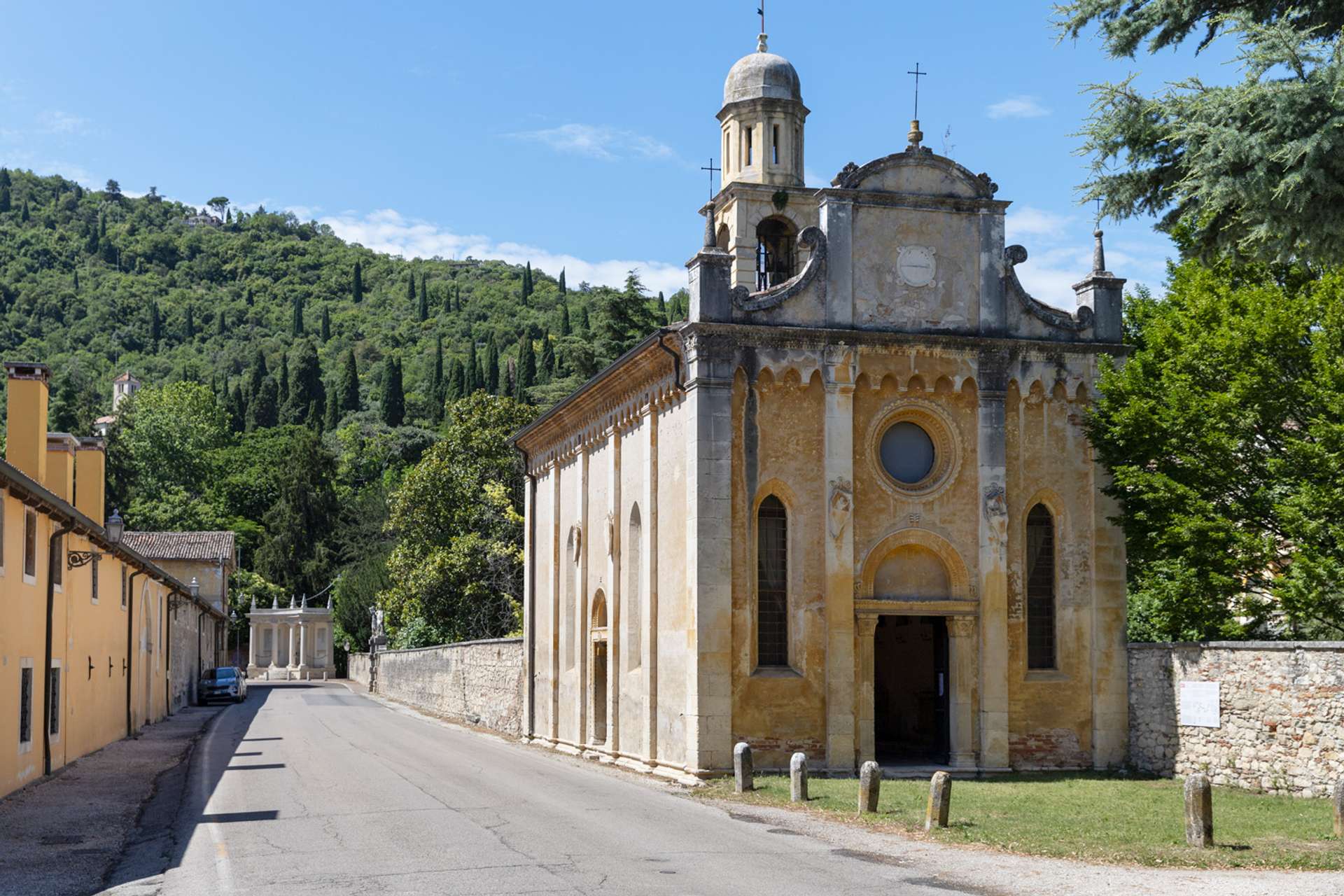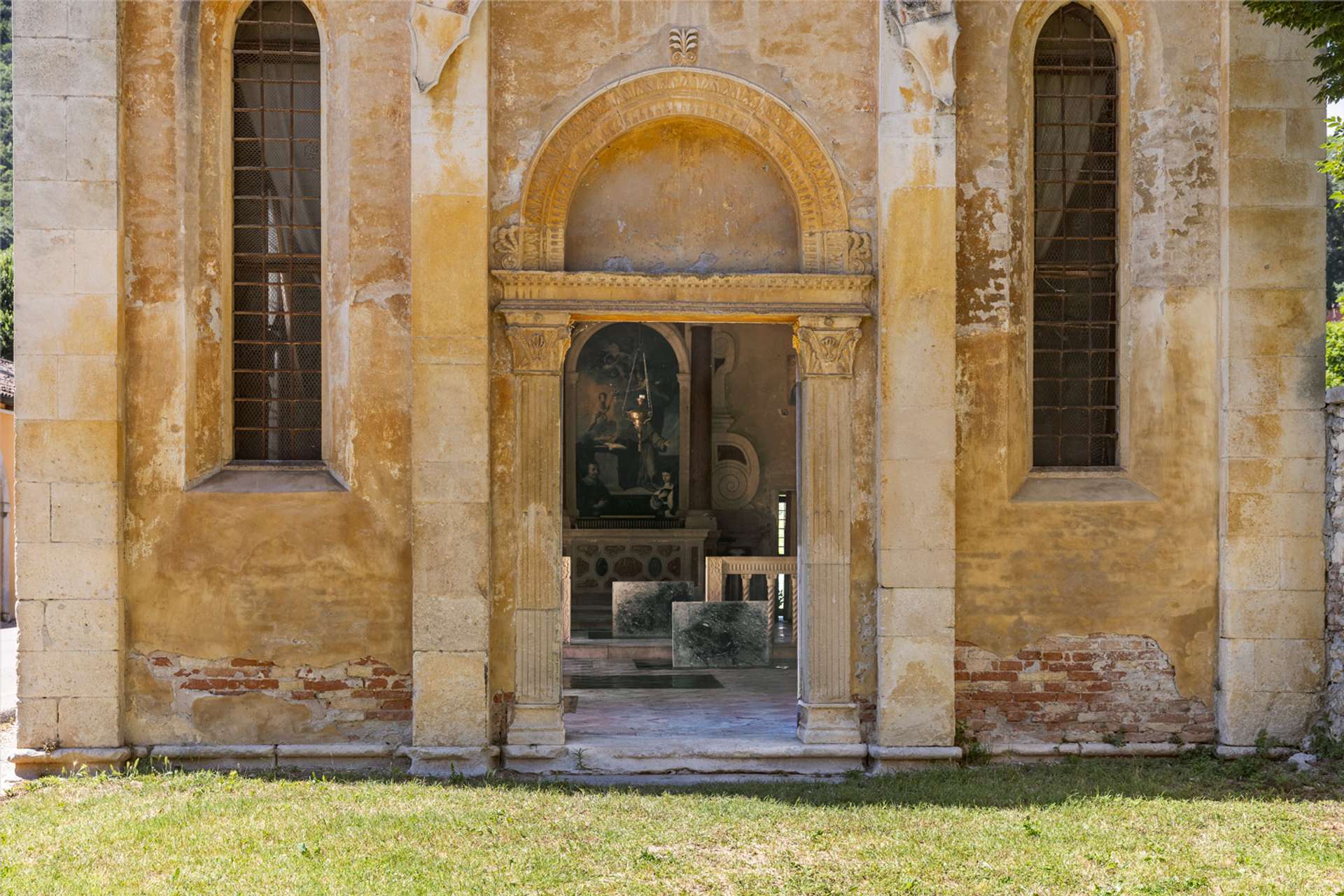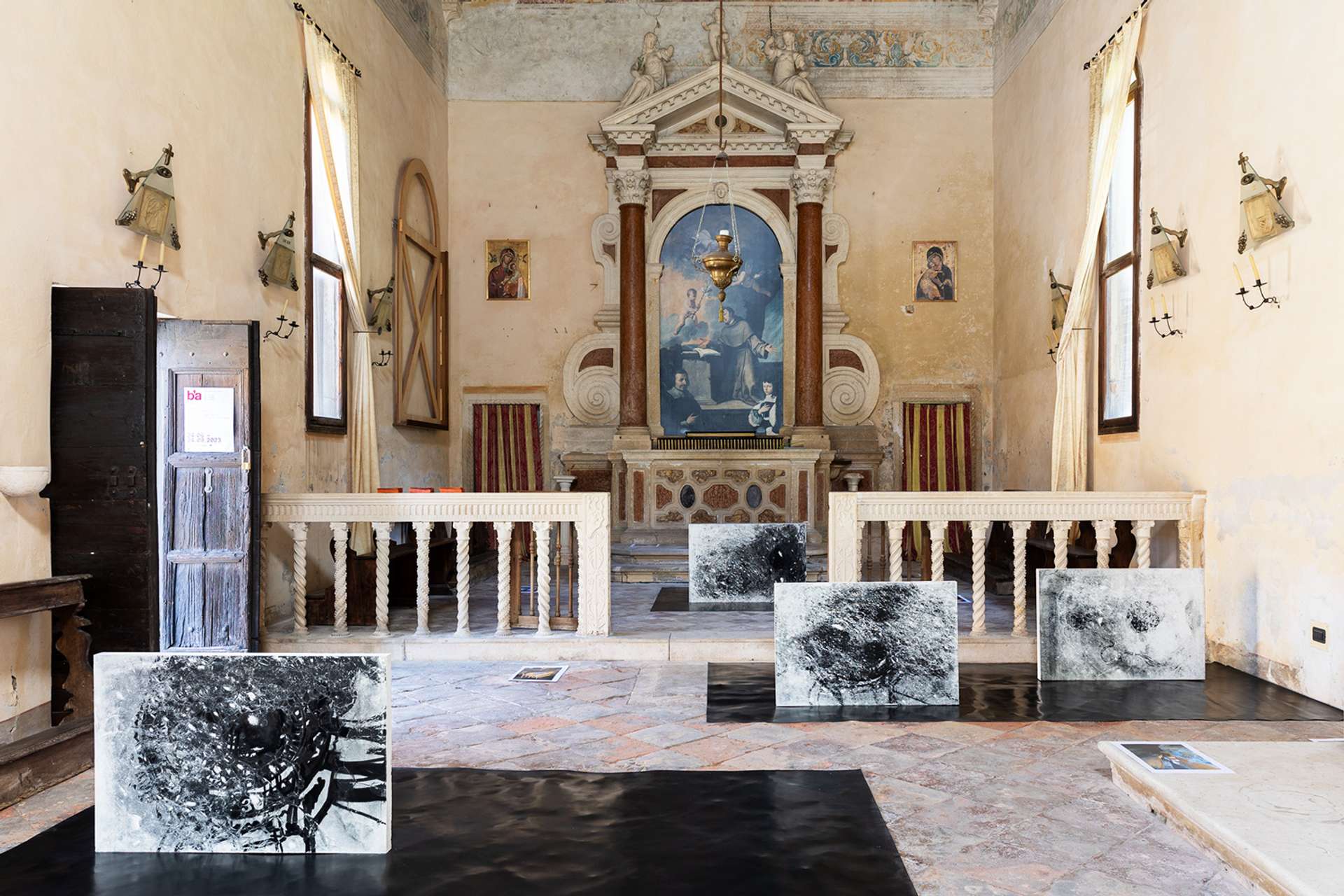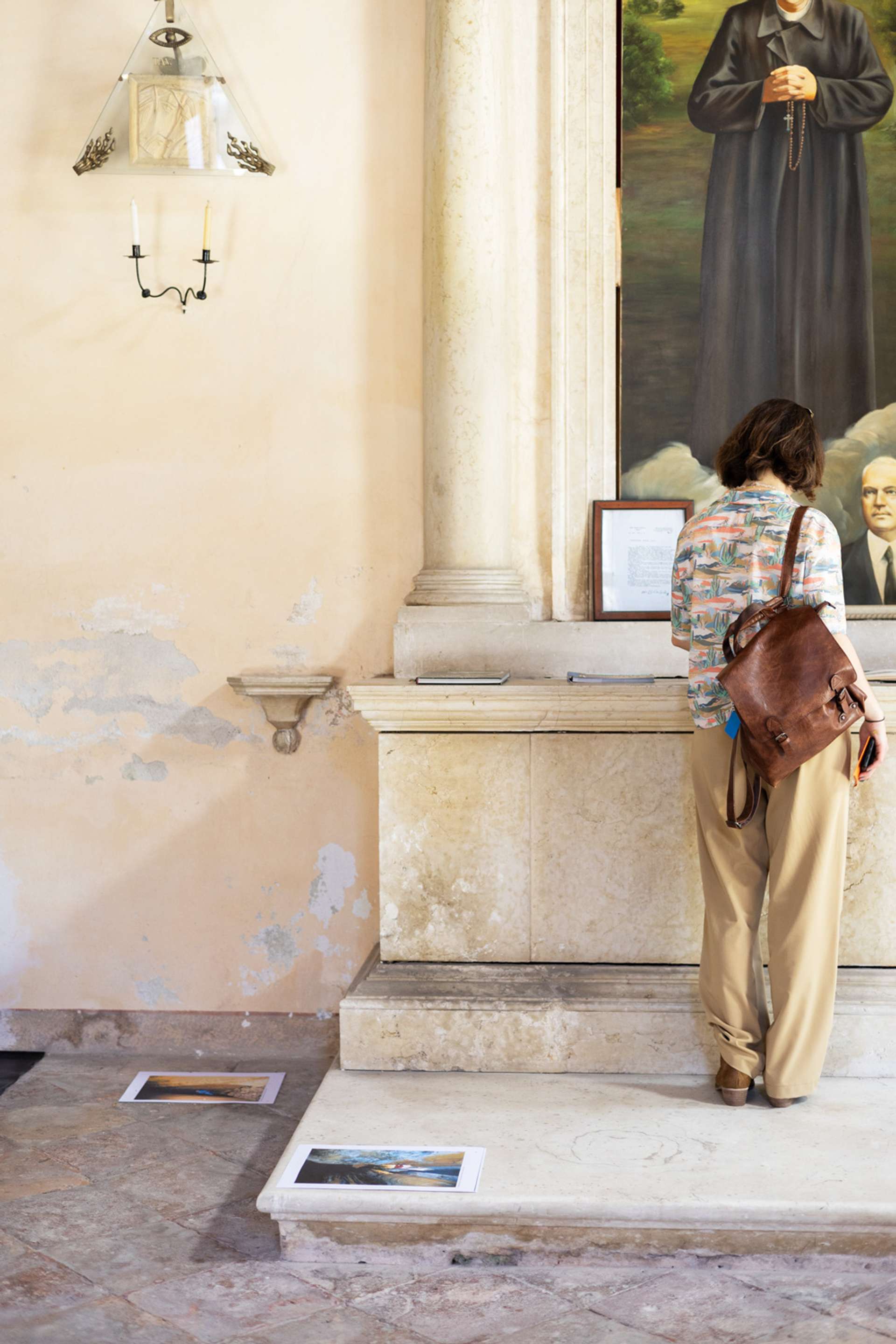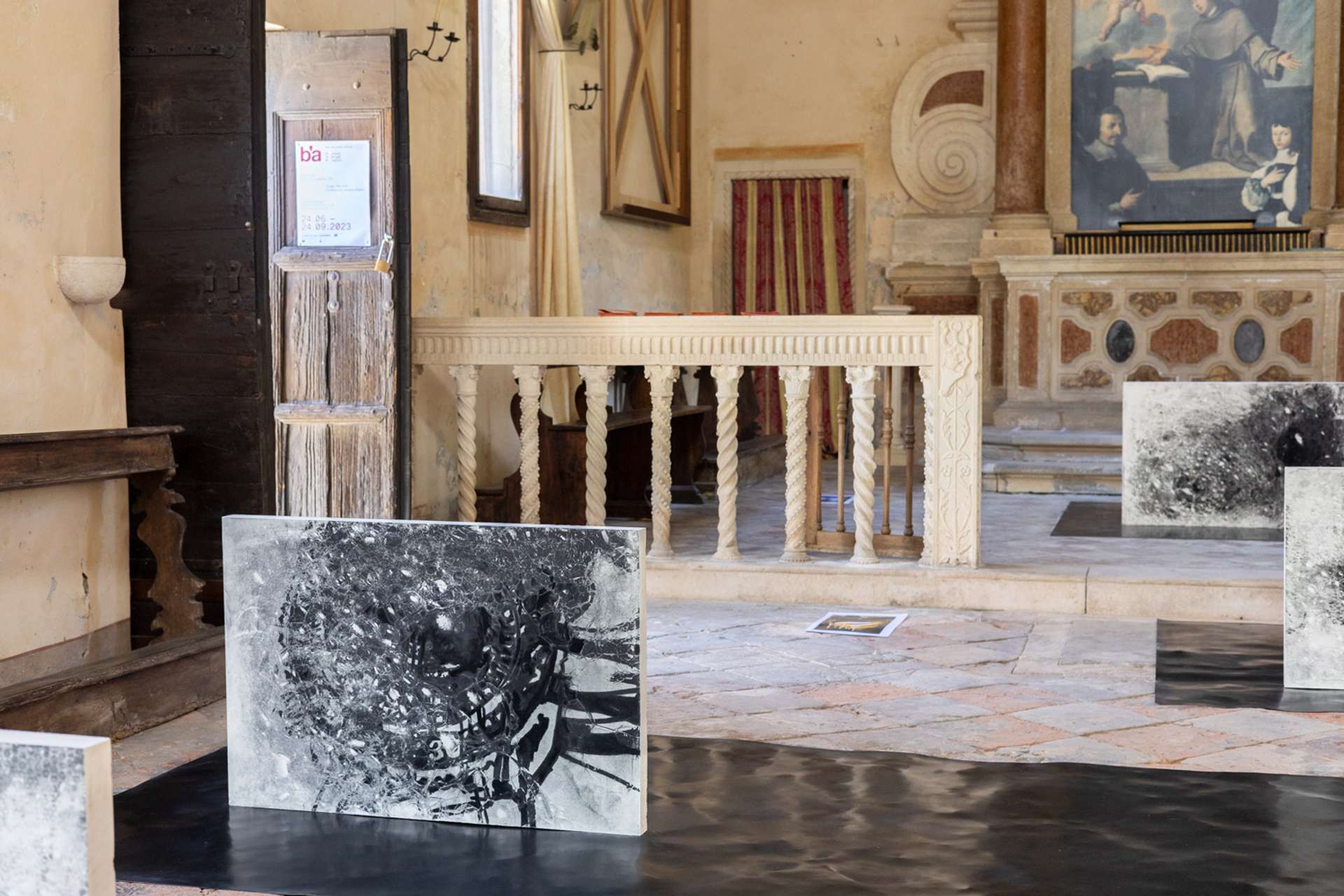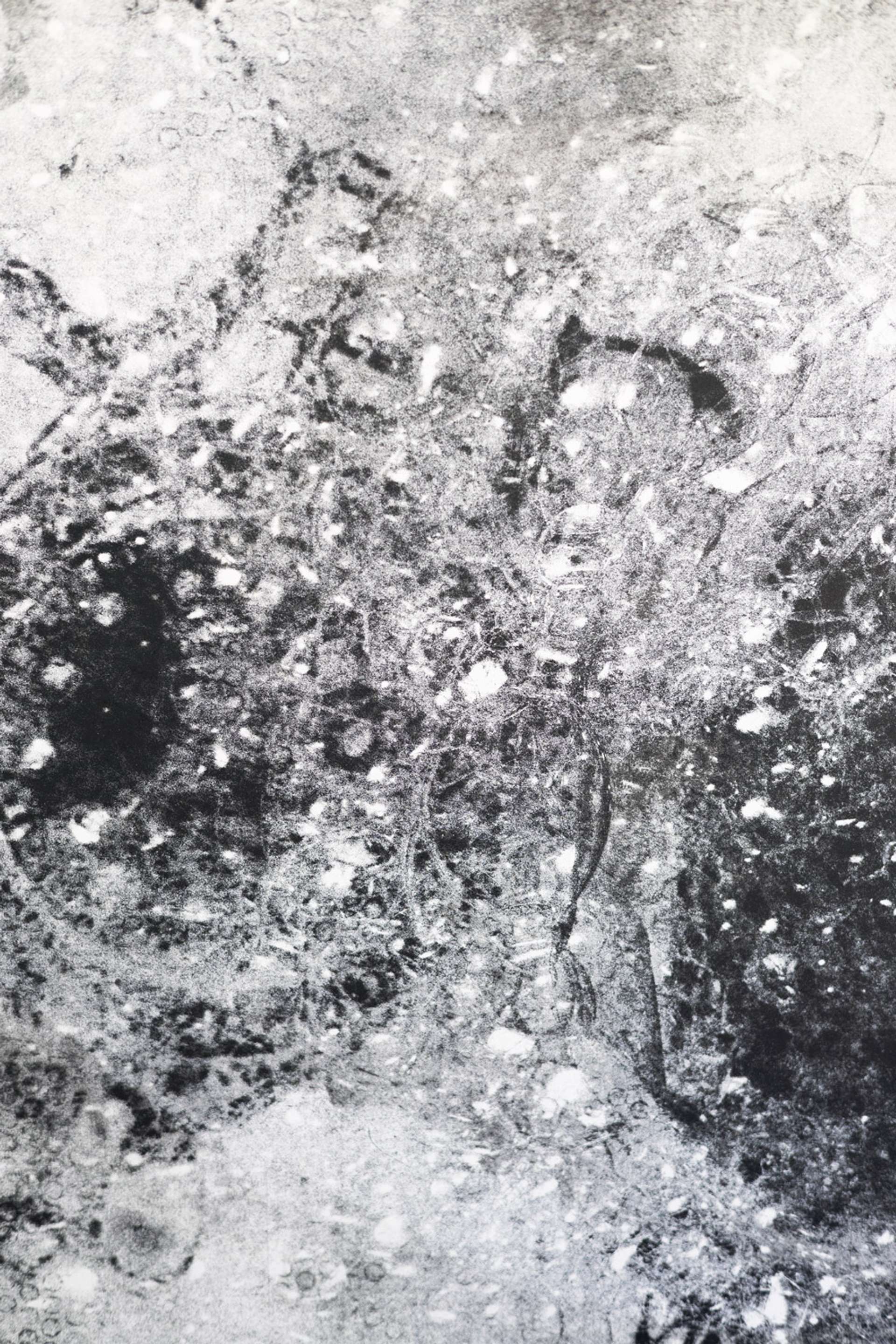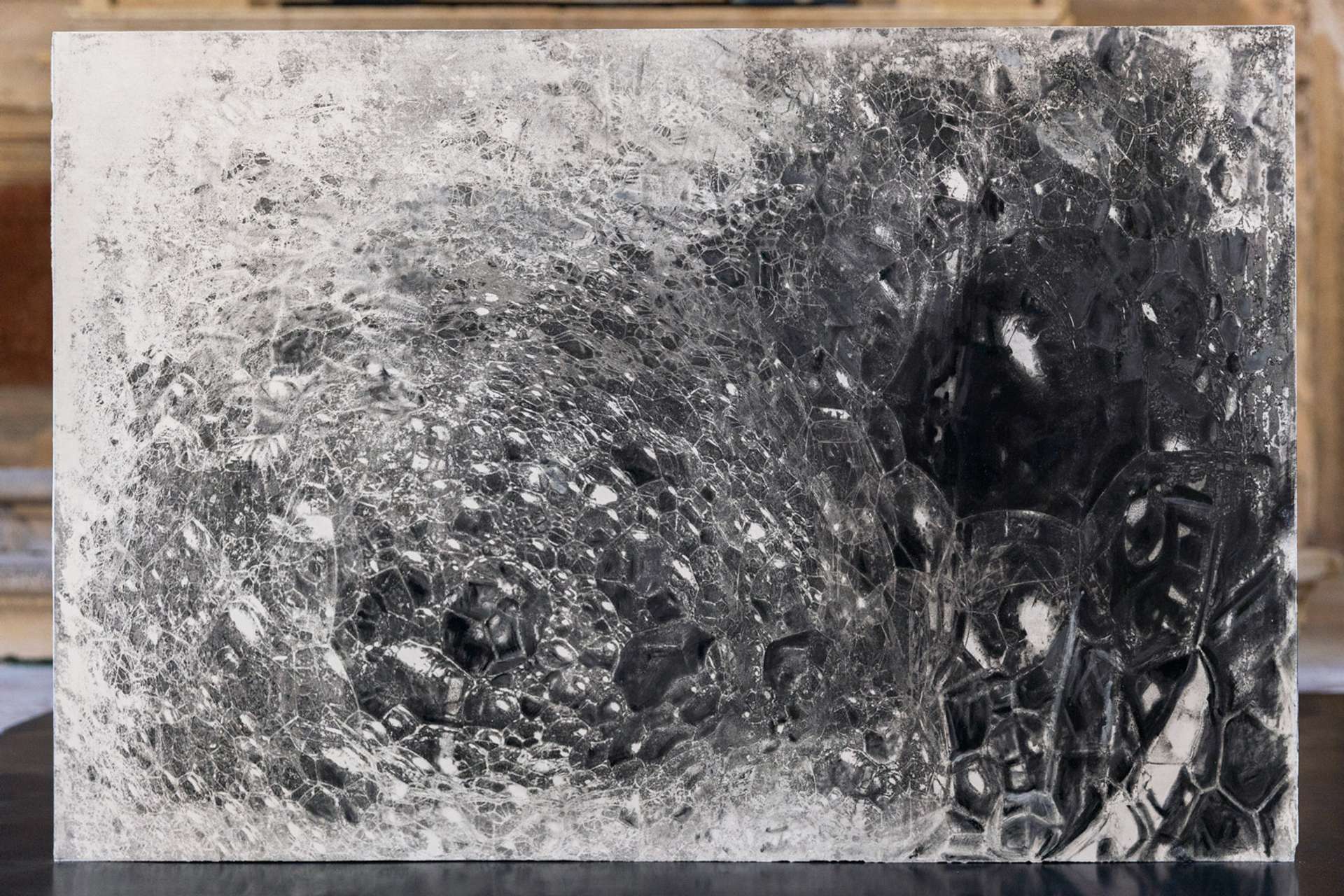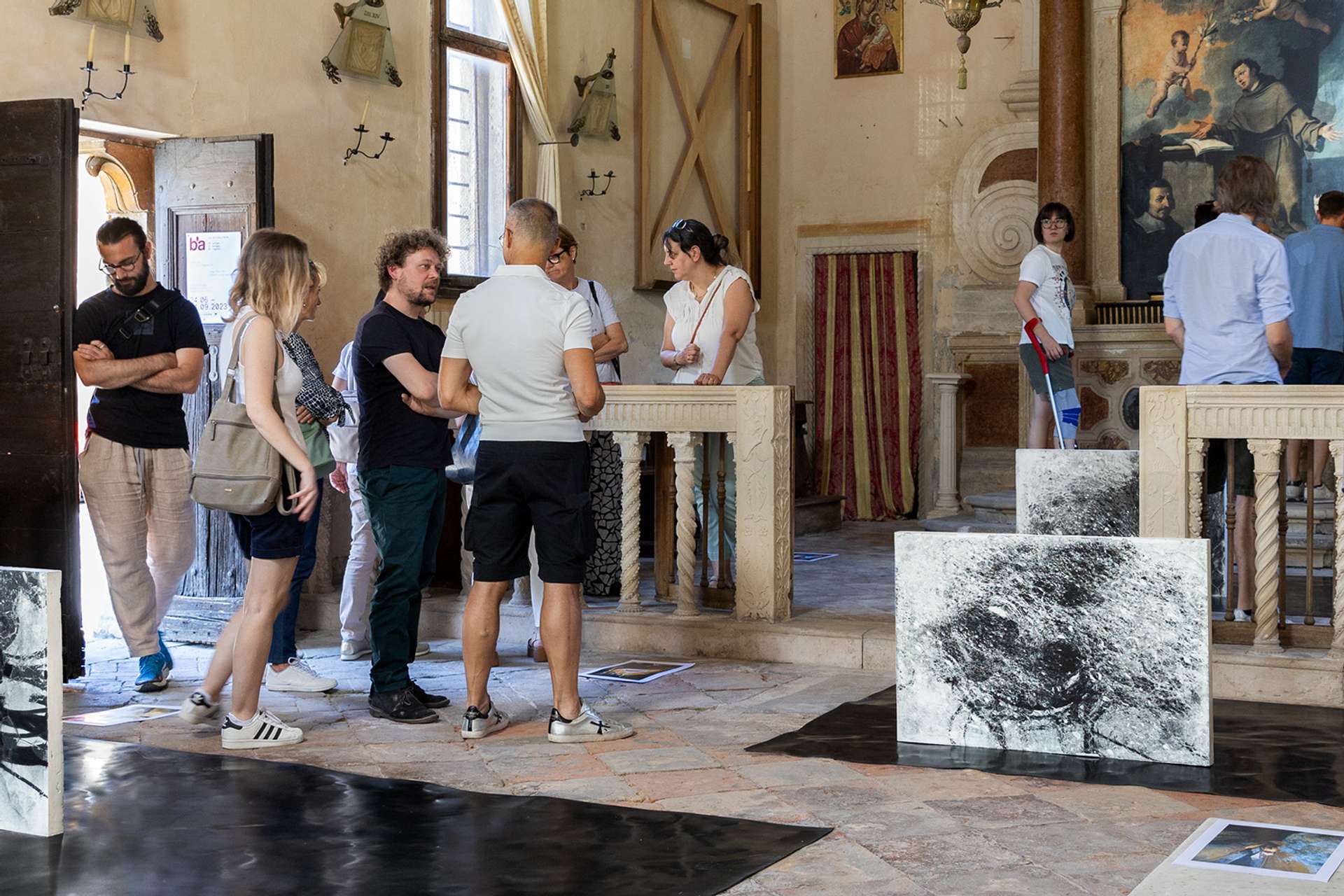The first point of reference useful for approaching Diego Perrone’s work in Costozza is the apt definition given to this area by someone who experiences it every day: a closed treasure chest. Precise words that indicate the presence of unique but often inaccessible riches. The opening of a space in the village was therefore the first step in creating a relationship with the territory, followed by a detailed study of its remarkable geological origins. In fact, Costozza’s history is linked to the Berici Hills and to Pietra di Vicenza (Vicenza Stone), which since ancient times has been renowned for its unique characteristics of workability and strength. Strata of this stone hundreds of metres thick were formed by the crushing and accumulation of sand, shells, crustaceans and organic residues. The presence of a warm, oxygenated sea initiated this process, while the collapse of an ancient coral reef, the emersion of the seabed and the subsequent retreat of the waters completed it. Il frullamento del mare di latte (The mixing of the sea of milk) is an environmental installation in the small church of San Michele, whose origins can also be found in the ancient statute of Costozza and which predates the construction of Villa Trento Carli, of which it is now a part. The works and the selection of books that make up the installation are intended to immerse the viewer in the process that over thirty million years ago led to the creation of the village’s terrain. The foam, apparently shapeless but whose bubbles are generated by precise mathematical algorithms, becomes the symbol of a living transformation, made of organic elements: a crystallisation in which time loses its meaning and whose elements are destined to dissolve. At the same time, the foam represents a layer of vision through which something else can be glimpsed; just as in the ancient Hindu legend of Samudramanthana, from which the title is taken, the stirring of the original waters has succeeded in bringing ancient treasures to the surface.
ㅤ
ㅤ
Exhibited works:
Diego Perrone, Il frullamento del mare di latte, 2023. Chalcographic print on plaster, selection of books, variable dimension.
Chiesa di San Michele, via Bartolomeo Bizio, 22, 36023 Longare (VI)
ㅤ
FROM THE MECHANICS OF THE FOAM I CAN DEDUCE AN OVERALL ARCHITECTURE, A GEOMETRY THAT EVOLVES UNTIL IT DISSOLVES. WHEN THE SEA THAT COVERED COSTOZZA RECEDED, THE FERMENTATION OF ITS SEABED GENERATED SMALL VOIDS IN THE STONE, THE MEMORY OF THE FIRST INHABITANTS TO POPULATE THIS LAND
Diego Perrone (Asti, 1970)lives and works in Milan.He’s a visual artist working mostly with sculpture and drawing, creating mental landscapes that are neither real nor imaginary. His solo exhibitions have been presented in institutions such as MACRO, Rome (2022-23); Museo Nazionale Romano - Palazzo Massimo, Rome; Bullseye Projects, Portland (2019); Villa del Principe, Genoa; Spazio Murat, Bari (2017); Museion, Bolzano (2013); Fondazione Brodbeck, Catania (2010); CAPC, Bordeaux; MAMbo, Bologna (2007); Fondazione Sandretto Re Rebaudengo, Turin (2005); Pitti Immagine Discovery, Florence (2000). His works have been included in major group exhibitions at: GAM, Turin; Kunstmuseum St.Gallen, Switzerland; Villa Medici, Rome; Palazzo del Quirinale, Rome; Triennale, Milan; Castello di Rivoli, Turin; Magasin, Grenoble; Museum of Contemporary Art, Chicago; Palazzo Grassi, Venice; Malmö Art Museum, Malmö; PAC, Murcia; Whitechapel Gallery, London; New Museum, New York; Solomon R. Guggenheim Museum, New York; Centre Georges Pompidou, Paris. He has participated in numerous international exhibitions such as La Biennale di Venezia, (2013 and 2003); Berlin Biennial for Contemporary Art (2006); Moscow Biennale (2005); Triennale India, Lalit Kala Akademi, New Delhi (2005); Manifesta 3, Ljubliana (2000).
IS AN ENVIRONMENTAL INSTALLATION IN THE SMALL CHURCH OF SAN MICHELE, COMPOSED OF A SERIES OF SCULPTURAL WORKS AND A SELECTION OF BOOKS THAT RETRACE THE PECULIAR GEOLOGICAL ORIGINS OF THE TERRITORY
Costozza is situated on the road that skirts the eastern Berici Hills and links Vicenza to the Basso Vicentino area, just beyond Longare: a treasure trove of architecture, art and history out of all proportion to its small size. Churches, villas and spectacular gardens filled with statues bear witness to an incredible past. Since ancient times, this district was famous for the quality of its local wines and for the quarrying of the white limestone, known as Costozza stone, which was hewn both from deep inside the mountain and from the ‘priare’, or open-cast quarries. Vestiges of the centuries-old mining activity, in addition to the sheer rock walls that form the backdrop to the village, can be seen in the caves where another typical local product is grown: poplar mushrooms. These tunnels, artificial or of karst origin, form a system famous for its extent and for being connected to ventiducts, underground tunnels that were used to bring fresh air in summer and warm air in winter into the interiors of the villas and their cellars. This is a true ante litteram air conditioning system, perfected in the 16th century and also studied by Palladio. It was also utilised for the so-called Scherzo di Costozza (Costozza Trick): when the gates were suddenly opened, the illustrious guests shivered in the gusts of cold air. Legend has it that Galileo Galilei, a guest of the Counts Trento, was also a victim of this in the late 16th century: in a letter, he described his time in Padua as ‘the best eighteen years of my entire life’, but attributed all the ailments of his old age to that episode.
